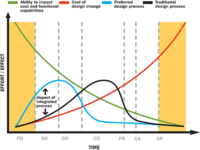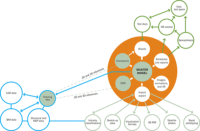The first four models in the LEGO Architecture series included the Empire State Building, the Seattle Space Needle, and Chicago’s John Hancock Center and Sears Tower. In May of this year, LEGO introduced Frank Lloyd Wright’s Guggenheim model at the opening of the Guggenheim’s Frank Lloyd Wright: From Outward Within exhibition. A Fallingwater model, introduced in July, includes a 100-page-plus hardcover book; all of the other models contain booklets with archival historic material and photographs as well as building directions.
Available through Tucker’s site at brickstructures.com, as well as at high-end bookstores, museums, and retailers nationwide (as well as the landmarks), the models range from $20 to $100, depending on the set. “We are creating a very enriched experience,” says Tucker. “The bricks are just a tool to tell the story.”
In addition to his work for The LEGO Group, Tucker’s expertise as a LEGO artist has earned him an exhibition currently at the Museum of Science and Industry in Chicago. Titled ART + Science = Architecture, the show features more than 15 architectural LEGO creations, some more than 10-feet high, representing buildings such as China’s Jin Mao Tower, the St. Louis Gateway Arch, and the proposed Chicago Spire.
What should we expect next in the LEGO Architecture series? Tucker’s wish list includes the Robie House (for its upcoming 100th anniversary), Burj Dubai as an international model, or even historical structures such as the Acropolis. “We have an open mind to this approach,” he says, “and anything is possible.”
ART + Science = Architecture at Chicago’s Museum of Science and Industry runs through March 15, 2010. For more information, visit the museum’s Web site.











Post a comment to this article
Report Abusive Comment